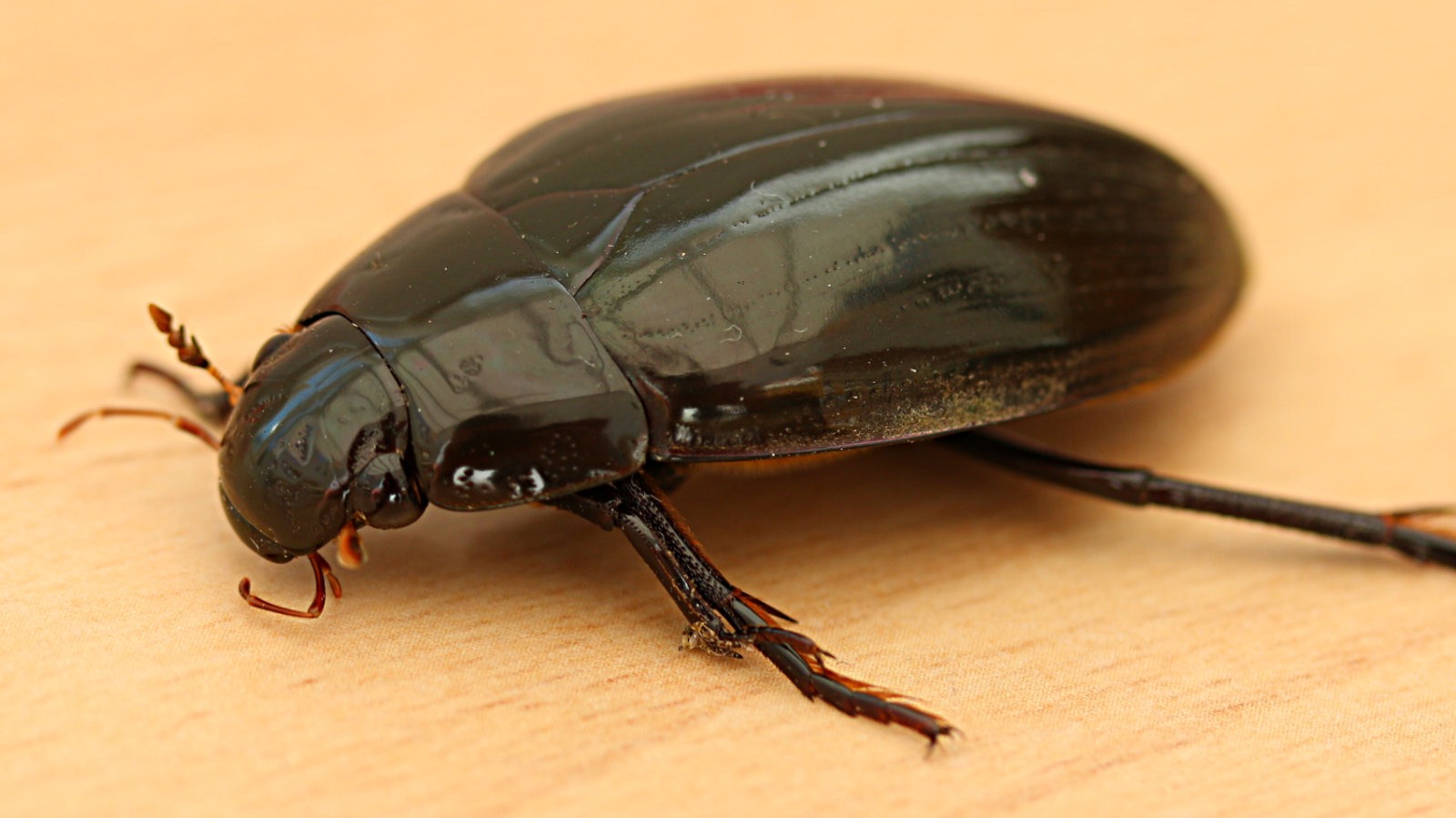Shiny and light black/ greenish in colour, it is so named because of the silvery appearance of its underside caused by a layer of trapped air. Larvae: Long, thin and light brown in colour, they have very short legs and pincer like mouthparts.
This is our largest aquatic beetle and, sadly, one of our rarest. Confined to a few parts of Southern England, it feeds almost exclusively on decaying plant matter. Its larvae prey on water snails from a young age but move on to plant debris as they mature. Preferring the dank surroundings of weedy drainage ditches, it can also be found in your garden pond if there’s enough food on offer. Unlike many aquatic beetles, it comes to the surface head first rather than upside-down to collect air.
Latin name: Hydrophilus piceus
Size: 35-50mm long.

In the garden
Your garden pond will benefit greatly from the appearance of this wonderful beetle. Not only is it a rare and special sight in many areas, but it will keep on top of any dying plants which can dirty your pond water and reduce its oxygen content. Plenty of plant material around your pond will attract them in. Try to leave a weedy corner in your pond so that they have a perfect environment should they be passing by.
Cover photo: ‘Hydrophilus piceus‘ by Jeremy Halls is licensed under (CC BY-SA 2.0)